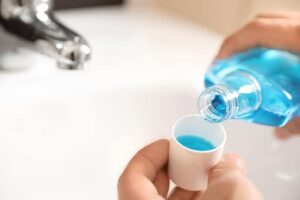I see thousands of patients, day after day, year after year and it never ceases to amaze me. That in a modern country like Australia, with one of the most advanced health systems in the world, we have an epidemic of oral health diseases.
Far too often people lose their teeth to periodontitis (gum disease) simply because they have never been taught the simple skill of tooth brushing. I tell my patients that this is one of the most valuable things I can do for them – to teach them how to brush their teeth. My advice is FREE! So it’s about time I put my advice on paper and share it with all of you.
Everything you need to know about brushing and flossing your teeth is right here.
Start with a soft toothbrush.
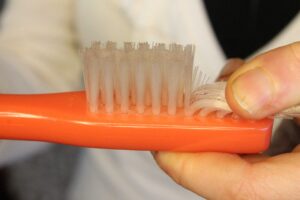
Ok, so it feels intuitive to give your teeth a good scrub, right? Afterall, they work hard every day crushing food, bathing in tea, coffee and red wine. You want to give them a good scrub at the end of each day in order to remove the stains and keep them squeaky clean.
So you buy the hardest tooth brush from the supermarket to do a really good job. STOP right there! The purpose of tooth brushing is not to scrub the dirt off your pearly whites but to gently remove bacterial plaque deposits that build up daily and cause marginal gingivitis and periodontitis (gum diseases). Plaque is soft but sticky. It can be easily removed using the right brushing technique and a soft toothbrush.
In fact, if you use a hard brush, you will scrub away enamel. I see too many people damaging their teeth with this good intention. Please, please, please, next time you buy a new toothbrush, go for soft. There is not need to splash out, save your money for something else. Hard toothbrushes are really good for getting into those hard to reach corners on your kitchen bench but not for brushing your teeth.
No scrubbing!!!
Do I need to say it again? Please, no scrubbing! Plaque is soft and can be easily lifted with a gentle touch. You want to remove plaque instead of tooth enamel. So re-train your eager hand to be gentle on your teeth. It’d be like scrubbing your face with steel wool!! Your teeth will thank you for going soft.
Angulate your toothbrush 45 degrees

Brush each tooth for at least 3 seconds
Gently, using a short back and forth jiggling motion. Brush one tooth at a time for 3 seconds. Plaque is soft but it’s sticky, so it requires at least 3 seconds to remove it. Remember, be gentle and spend enough time, otherwise, you might as well not do it.
Repeat… Repeat… Repeat….
Boring! But that’s what tooth brushing is, it just has to be done. Besides, that’s why the Wiggles sing a song about it, so, make it fun, hum a wiggles song while you’re brushing. Repeat on each tooth (top and bottom). Then repeat again on all inside surfaces of the teeth. Remember, 3 seconds each tooth.
Change toothbrush position for the inside of the front teeth
 Change the position of your toothbrush to accommodate the insides of your top and bottom front teeth. The toothbrush doesn’t fit well here so you have to use the front or the back of the toothbrush to reach these surfaces. Again, brush the neck of each tooth for 3 seconds in an up and down motion this time – it’s easier this way.Change the position of your toothbrush to accommodate the insides of your top and bottom front teeth. The toothbrush doesn’t fit well here so you have to use the front or the back of the toothbrush to reach these surfaces. Again, brush the neck of each tooth for 3 seconds in an up and down motion this time – it’s easier this way.
Change the position of your toothbrush to accommodate the insides of your top and bottom front teeth. The toothbrush doesn’t fit well here so you have to use the front or the back of the toothbrush to reach these surfaces. Again, brush the neck of each tooth for 3 seconds in an up and down motion this time – it’s easier this way.Change the position of your toothbrush to accommodate the insides of your top and bottom front teeth. The toothbrush doesn’t fit well here so you have to use the front or the back of the toothbrush to reach these surfaces. Again, brush the neck of each tooth for 3 seconds in an up and down motion this time – it’s easier this way.
One more step if you have missing teeth
If you have missing teeth, don’t forget to brush the front and the back of the teeth either side of the gap. These surfaces often get overlooked and they commonly develop gum disease.
Now, you’re almost done!
Most people have 32 teeth. So if you spend about 3 seconds on the outer and the inner surfaces of your teeth, you’ll need to brush 62 surfaces for 3 seconds each. So, a person with a full set of adult teeth should spend about 3 minutes brushing their teeth daily. Are you any good at maths? Here’s the formula:
number of teeth x 2 (surfaces) x 3 (seconds)
___________________________________ = minutes a day you need to brush
60 (seconds in a minute)
So this process should take you about three minutes a day. Once a day. Every day! You don’t even have to do it twice a day like most people do. Evidence suggests that it takes at least a few days of plaque build-up to start causing gum inflammation. So despite common belief, once a day is enough. We’re not finished yet, as this brings me to my next point, flossing.
But what if I have an electric toothbrush?
Ah yes.. an electric tooth brush is great for people with manual 
Flossing
No matter how well you brush your teeth, the bristles of the toothbrush will not get in between the teeth
dental flossThis is why floss has been invented. Essentially, if you only brush, you’re only cleaning 50% of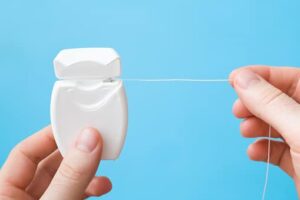
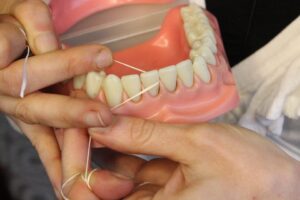
Debunking the myths
What time of the day is best to brush teeth?
It doesn’t matter what time of the day you brush and floss. You don’t even have to brush and floss at the same time – you just have to do it daily! The only exception to this is that you shouldn’t brush after you’ve had something acidic, for instance; juice, fruit or a salad with vinegar dressing. Acids demineralise tooth enamel making it weaker. It will naturally remineralise from calcium and phosphate in your saliva. This process takes about 20 to 30 seconds. So if you brush within that window of time, you will scrape weakened enamel off. Do it regularly and you will start seeing damage. The best time to brush is either first thing in the morning before you’ve had your breakfast or last thing at night before you go to bed. Otherwise, you can pick a time between meals but please remember to allow enough time for remineralisation.
Is a waterpik worth it?
Dental Water jet, waterpik, waterflosser…Blah… Blah… It’s a gimmick! A motorised toothpick. Did you hear me? It’s a device that will cost you money, make you feel falsely good about caring for your teeth and waste your time. These devices use a stream of high pressure pulsating water that blows food out from between your teeth. This might make you feel somewhat satisfied with food not harbouring between you teeth, but remember what I said about plaque? It’s not the chunks of food that cause gum disease but the bacterial plaque. None of these devices will remove plaque effectively. So we are back to prehistoric measures – flossing! Oh, no! I hear you. I have to do it myself… Yep… there’s no magic device when it comes to flossing.

Are interdental brushes any good?
Now we’re talking. Don’t confuse these little bottle brushes for toothpicks. Interdental brushes are brilliant. They’ll only set you back approximately $10 a pack and will last a few months but they are a little miracle for people who have gaps between their teeth. If you use these interdental brushes, this is the only time that I will excuse you from flossing. So go ahead and buy them.
Can I use toothpicks instead of floss?
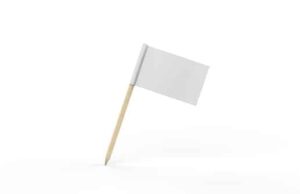
No. Toothpicks are for getting chunks of food out from hard to get to corners in your mouth. They will not remove plaque. If you can visualise trying to clean the inside of a bottle with a stick… You get the point? But a bottle brush will do the job, won’t it? So if you’d rather use some other device instead of floss, get yourself some interdental brushes instead.
Why back and forth jiggling motion and not circles?
You’ve read online or a dentist has told you that circular motion or an up and down rolling toothbrush technique is the best way to brush your teeth. Sure, you can achieve the same outcome this way, but you have to be very coordinated to create small circular motion on your teeth, and you have to do it fast for 3 seconds. Most people don’t even floss let alone feel coordinated when it comes to brushing. I am trying to make it easier for you and to save you time so that you can go and do more enjoyable things in life than daily routines. But, if it makes you feel any better, knock yourself out. Personally, I do what works, what’s effective and what will save me time so that I can go to work and see my patients early each morning. I’d rather be stuck in traffic listening to podcasts than spend extra time brushing my teeth.
What about mouth rinses?
Again, I will cast a shadow of doubt on this widespread practice. Most, commonly used mouth rinses such as Listerine are useless at best and harmful at worst. They do not remove plaque from your teeth. They might give you a burst of fresh breath but at what cost?
There was a recent study, and mind you, more research is indicated, but the study showed that rinsing with Listerine had an unexpected connection with Type 2 diabetes.
The researchers found that rinsing with Listerine killed mouth bacteria that helped produce nitric oxide. Nitric oxide is the good guy that helps the body regulate insulin and prevents insulin resistance, allowing your body to regulate sugars.
For the record, I don’t recommend rinsing with Listerine, not because of this study, but because using an anti-septic rinse like Listerine doesn’t help prevent tooth decay or gum disease anyway.
Chlorhexidine (Savacol) mouth rinse is very useful in preventing gum disease but it will stain your teeth a lovely green colour. So you won’t only be paying for the mouth rinse but also for regular scale and cleans by your dentist. I only recommend chlorhexidine to my patients for short term use after they’ve had surgery, simply because they can’t brush their teeth for a week. So the verdict is: save yourself money on expensive mouth rinses.
What about the ancient practice of oil pulling?
There are many ancient practices from the times when we didn’t have evidence. The ritual of oil pulling seemingly originates from India. It is was thought that the mechanism of oil pulling (with coconut, sunflower or sesame), through vigorously swishing it (oil) around the mouth for 15 minutes to create a soapy emulsion, supposedly draws harmful bacteria out of the mouth with the expulsion of this concoction.
It is also claimed to aid other systemic conditions such as meningitis, heart and kidney disorders, hormonal disorders, cancer and even AIDS. It all sounds like a plausible possibility. “Why not?” if other liquids such as chlorhexidine have been demonstrated to reduce gingivitis? However, when this was put to the test, little evidence emerged to suggest that is actually true. In fact, little research has been conducted on oil pulling at all.
The studies which are available have either used a small sample size of participants or have not used a control group to compare the difference between those who did oil pulling and those who didn’t. The studies which were adequately set up did not demonstrate any benefits of oil pulling. Besides one study that suggested in comparison to chlorhexidine, swishing oil around the mouth for 10 minutes daily demonstrated similar effects to chlorhexidine after two weeks.. In a scientific world, few conclusions can be made based on such inadequate evidence.
To date, there is no evidence that oil pulling can prevent cavities, detoxify the body, strengthen teeth, treat cancer or reduce headaches, despite such claims made online. So until we have such evidence, it is still recommended to stick with traditional methods of chemo-mechanical (brushing correctly with toothpaste) debridement and having a healthy diet. At this stage it does not appear that oil pulling is a useful, evidence based adjunct to brushing and a good diet.
What toothpaste should you choose?
The purpose of toothpaste is to deliver minty fresh flavour and fluoride to your teeth. There is a plethora of evidence on topical fluoride, strengthening tooth enamel and making it more resistant to dental caries, commonly known as decay. Use fluoridated toothpaste. But does it help your gums. Not really. Even in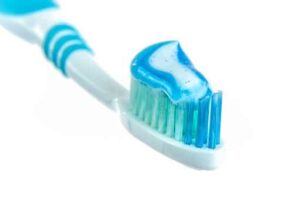
Is charcoal toothpaste any good?
It’s just another modern age gimmick. It’s claimed that activated charcoal removes stains and whitens teeth. It might be somewhat useful in removing surface stains due to it’s abrasive nature but there is no evidence that it has any intrinsic whitening properties. Furthermore, due to it’s abrasive nature, it’s likely to wear enamel overtime, and expose more sensitive dentine underneath. Not only your teeth can become more sensitive to hot and cold but dentine is actually yellow and it will show through worn enamel. Isn’t it the complete opposite of what charcoal claims to achieve?
Is baking soda lemon juice toothpaste a natural alternative to tooth whitening?
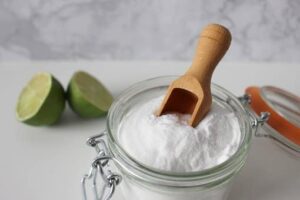
So there you have it. You’re now armed with all the information required to make an informed decision regarding your teeth and gum maintenance. Hopefully you’ll use your new found powers for good instead of evil, or at the very lease, you won’t fall victim to the next tooth-thingamajig.


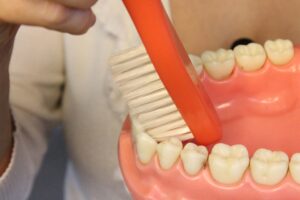 Change the position of your toothbrush to accommodate the insides of your top and bottom front teeth. The toothbrush doesn’t fit well here so you have to use the front or the back of the toothbrush to reach these surfaces. Again, brush the neck of each tooth for 3 seconds in an up and down motion this time – it’s easier this way.Change the position of your toothbrush to accommodate the insides of your top and bottom front teeth. The toothbrush doesn’t fit well here so you have to use the front or the back of the toothbrush to reach these surfaces. Again, brush the neck of each tooth for 3 seconds in an up and down motion this time – it’s easier this way.
Change the position of your toothbrush to accommodate the insides of your top and bottom front teeth. The toothbrush doesn’t fit well here so you have to use the front or the back of the toothbrush to reach these surfaces. Again, brush the neck of each tooth for 3 seconds in an up and down motion this time – it’s easier this way.Change the position of your toothbrush to accommodate the insides of your top and bottom front teeth. The toothbrush doesn’t fit well here so you have to use the front or the back of the toothbrush to reach these surfaces. Again, brush the neck of each tooth for 3 seconds in an up and down motion this time – it’s easier this way.